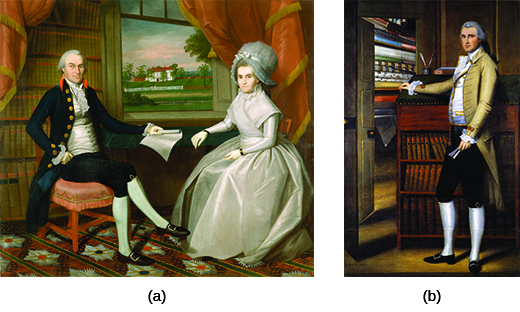| << Chapter < Page | Chapter >> Page > |
George Washington, who had been reelected in 1792 by an overwhelming majority, refused to run for a third term, thus setting a precedent for future presidents. In the presidential election of 1796, the two parties—Federalist and Democratic-Republican—competed for the first time. Partisan rancor over the French Revolution and the Whiskey Rebellion fueled the divide between them, and Federalist John Adams defeated his Democratic-Republican rival Thomas Jefferson by a narrow margin of only three electoral votes. In 1800, another close election swung the other way, and Jefferson began a long period of Democratic-Republican government.
The war between Great Britain and France in the 1790s shaped U.S. foreign policy. As a new and, in comparison to the European powers, extremely weak nation, the American republic had no control over European events, and no real leverage to obtain its goals of trading freely in the Atlantic. To Federalist president John Adams, relations with France posed the biggest problem. After the Terror, the French Directory ruled France from 1795 to 1799. During this time, Napoleon rose to power.
Ralph Earl was an eighteenth-century American artist, born in Massachusetts, who remained loyal to the British during the Revolutionary War. He fled to England in 1778, but he returned to New England in the mid-1780s and began painting portraits of leading Federalists.
His portrait of Connecticut Federalist Oliver Ellsworth and his wife Abigail conveys the world as Federalists liked to view it: an orderly landscape administered by men of property and learning. His portrait of dry goods merchant Elijah Boardman shows Boardman as well-to-do and highly cultivated; his books include the works of Shakespeare and Milton ( [link] ).

What similarities do you see in the two portraits by Ralph Earl? What do the details of each portrait reveal about the sitters? About the artist and the 1790s?
Because France and Great Britain were at war, the French Directory issued decrees stating that any ship carrying British goods could be seized on the high seas. In practice, this meant the French would target American ships, especially those in the West Indies, where the United States conducted a brisk trade with the British. France declared its 1778 treaty with the United States null and void, and as a result, France and the United States waged an undeclared war—or what historians refer to as the Quasi-War—from 1796 to 1800. Between 1797 and 1799, the French seized 834 American ships, and Adams urged the buildup of the U.S. Navy, which consisted of only a single vessel at the time of his election in 1796 ( [link] ).

Notification Switch
Would you like to follow the 'U.s. history' conversation and receive update notifications?